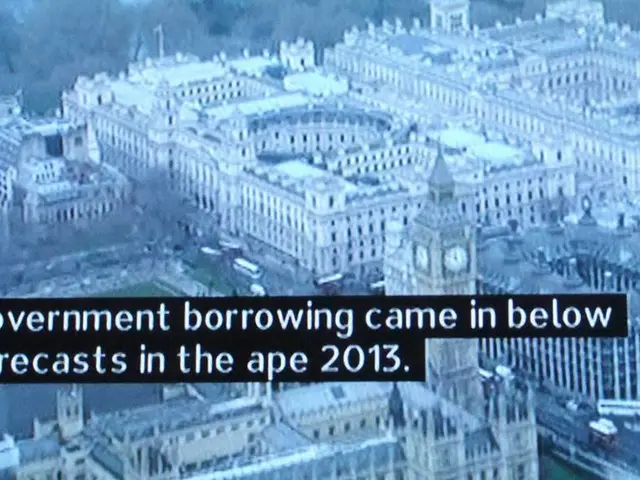Exploring Political Divides: An In-Depth Analysis of Democrat and Republican Conventions
In the heart of American politics, the dynamic duo - Democrats and Republicans - reign supreme. Although they may appear polarized, it's crucial to delve into the underlying nuances that set them apart, especially among their dedicated supporters and at their respective conventions.
The Roots of Political Parties in the U.S.
From humble beginnings as federalist and anti-federalist factions, the parties have undergone tremendous transformations, reflecting societal, economic, and political shifts.
Parties Uncovered: Conventions and Their Ideals
Party conventions serve as stage displays, spotlighting the core values and platforms that shape each party's identity. These gatherings bring together the party's most zealous supporters, often represented by delegates who embody the more active and passionate segment of the party.
Democratic Conventions: Showcase of Progressive Ideals
Democratic conventions shine a light on progressive ideals, emphasizing social justice, environmental sustainability, and economic reforms to address inequality. Key issues advocated by delegates include:
- Healthcare: A push for universal healthcare or more accessible healthcare options.
- Climate Change: Aggressive policies addressing environmental concerns and promoting renewable energy.
- Social Equality: Strong emphasis on civil rights, LGBTQ+ rights, and tackling systemic inequalities.
Republican Conventions: Focus on Conservatism
By contrast, Republican conventions tend to focus on:
- Economic Conservatism: Emphasis on free-market policies, lower taxes, and reduced government spending.
- National Security: Strong defense policies and stringent immigration controls.
- Social Conservatism: Preservation of traditional values, caution towards rapid social change.
Beyond the Spotlight: The Party Faithful
The party faithful, encompassing the general membership, may not always echo the delegates' ideals perfectly. This discrepancy can be attributed to regional differences, personal experiences, and varying levels of political engagement.
Democratic Base: A Spectrum of Beliefs
Within the Democratic base, there often exists a spectrum of convictions. Some members align closely with the progressive ideals displayed at the conventions, while others adopt a more centrist approach, focusing on pragmatic solutions and bipartisan collaboration.
Republican Base: Diverse and Varying Views
Similarly, the Republican base is far from monolithic. Some members ardently support the conservative ideals presented at conventions, while others might lean towards more moderate or libertarian viewpoints, emphasizing individual freedoms and limited government intervention.
Delegates vs. Faithful: A Spectrum of Political Ideology
Comparing delegates and the party faithful reveals a gradient of political ideology. Delegates, being more involved in the party, often exemplify the more pronounced and ideologically driven aspects of the party. In contrast, the general membership represents a broader array of perspectives, sometimes resulting in internal debates and disagreements within the party.
A Shaping Force: Impact on Political Discourse and Elections
The differences between the parties, as well as the internal diversity within each party, significantly impact political discourse and election outcomes. Candidates and party leaders often walk a tightrope, grappling with the need to appease the passionate base and the broader electorate.
In Conclusion: Decoding the American Political Landscape
In summary, while there are clear ideological distinctions between the Democratic and Republican parties, especially at their conventions, the general membership presents a more nuanced and varied political landscape. Grasping these differences is key to understanding the dynamics of American politics and its impact on policymaking and governance.
The Future of Political Parties: Questions Unanswered
The evolving nature of these parties raises intriguing questions about the future of American politics. Will the parties veer towards greater ideological extremes or gravitate towards centrism? How will emerging social and economic challenges influence the parties' platforms and appeal to the electorate?
The Rise of Young Voters and New Perspectives
The active involvement of young voters and introduction of new perspectives can dramatically alter the political landscape. As issues like climate change, technological advancements, and global interconnectedness gain importance, both parties might undergo transformations to address these challenges.
The Importance of Civic Engagement
This analysis underscores the significance of civic engagement and informed participation in the political process. Understanding the nuances of party ideologies and their implications is essential for making informed voting decisions and engaging in political advocacy.
Bridging Divides: Fostering Constructive Dialogue
Recognizing the differences between and within parties is a stepping stone towards fostering beneficial political dialogue. In an era marked by polarization, bridging ideological divides and understanding diverse viewpoints are crucial for the health of American democracy.
Navigating the Changing Political Climate
As the political landscape continues to evolve, it's crucial for students and young voters to navigate these changes with a discerning eye. The emergence of new political movements, the impact of social media on political discourse, and the increasing importance of grassroots activism are reshaping traditional party dynamics.
The Role of External Factors
External factors, such as economic shifts, international relations, and technological advancements, play a pivotal role in shaping party ideologies. For instance, how parties respond to global economic trends or technological disruptions can lead to significant shifts in their policy positions and voter appeal.
The Impact of Independents and Third-Party Voters
It's essential to consider the role of independent and third-party voters in the U.S. political system. While the spotlight often centers on Democrats and Republicans, the perspectives and voting patterns of independents and third-party supporters can significantly influence election outcomes and policy discussions.
The Power of Media: Shaping Perceptions
The media wields immense power in shaping public perceptions of political parties. The depiction of party conventions, the focus on certain issues over others, and the framing of political debates can all impact how party ideologies are perceived by the public. Critical analysis of media representations is vital for a well-rounded understanding of political parties.
Education: Fueling Political Literacy
Lastly, the importance of political education cannot be overstated. A well-informed electorate is essential for the smooth functioning of democracy. Schools, universities, and other educational institutions play a crucial role in fostering political literacy, encouraging critical thinking, and preparing students to be active, informed participants in the political process.
Wrapping Up
In essence, the differences between the Democratic and Republican parties, particularly among their delegates and the general membership, reflect the diverse and dynamic nature of American politics. Grasping these differences is not just an academic exercise but a crucial aspect of being an informed citizen and an active participant in the democratic process. As budding scholars of government and political science, you embark on a journey that will not only enrich your understanding of American politics but also empower you to contribute to its future.
- In the realm of political science, understanding the core values and platforms displayed during Democratic and Republican conventions is crucial for decoding the American political landscape.
- Beyond the stage at the conventions, the general membership within each party presents a broader spectrum of political beliefs, encompassing a spectrum of ideologies ranging from progressive to conservative.
- Political parties, fueled by their respective bases' convictions, significantly impact policy-and-legislation, political discourse, and election outcomes, necessitating informed civic engagement and an understanding of the nuances between and within political parties.






